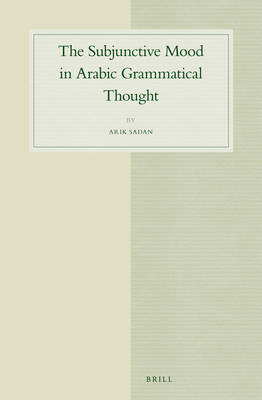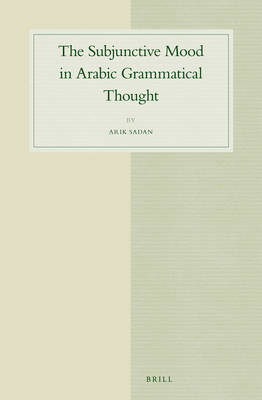
- Afhalen na 1 uur in een winkel met voorraad
- Gratis thuislevering in België vanaf € 30
- Ruim aanbod met 7 miljoen producten
- Afhalen na 1 uur in een winkel met voorraad
- Gratis thuislevering in België vanaf € 30
- Ruim aanbod met 7 miljoen producten
Zoeken
Omschrijving
In The Subjunctive Mood in Arabic Grammatical Thought Arik Sadan outlines the grammatical theories on the naṣb (subjunctive mood) in Classical Arabic. Examining over 160 treatises written by 85 grammarians, lexicographers and Qurʾān commentators, the author defines and characterizes the opinions of medieval Arab grammarians concerning this mood in the verbal system of Classical Arabic. Special attention is given to the prominent early grammarians Sībawayhi (d. ca. 180/796) and al-Farrāʾ (d. 207/822), who represent the Schools of al-Baṣra and al-Kūfa respectively.
The analysis of the grammarians' views enables the author to draw several important conclusions and hypotheses on the syntactic environments of the subjunctive mood, the dialectal differences relating to its employment and the historical changes and developments it underwent.
The analysis of the grammarians' views enables the author to draw several important conclusions and hypotheses on the syntactic environments of the subjunctive mood, the dialectal differences relating to its employment and the historical changes and developments it underwent.
Specificaties
Betrokkenen
- Auteur(s):
- Uitgeverij:
Inhoud
- Aantal bladzijden:
- 402
- Taal:
- Engels
- Reeks:
- Reeksnummer:
- nr. 66
Eigenschappen
- Productcode (EAN):
- 9789004232952
- Verschijningsdatum:
- 9/08/2012
- Uitvoering:
- Hardcover
- Formaat:
- Genaaid
- Afmetingen:
- 159 mm x 242 mm
- Gewicht:
- 757 g

Alleen bij Standaard Boekhandel
+ 610 punten op je klantenkaart van Standaard Boekhandel
Beoordelingen
We publiceren alleen reviews die voldoen aan de voorwaarden voor reviews. Bekijk onze voorwaarden voor reviews.








